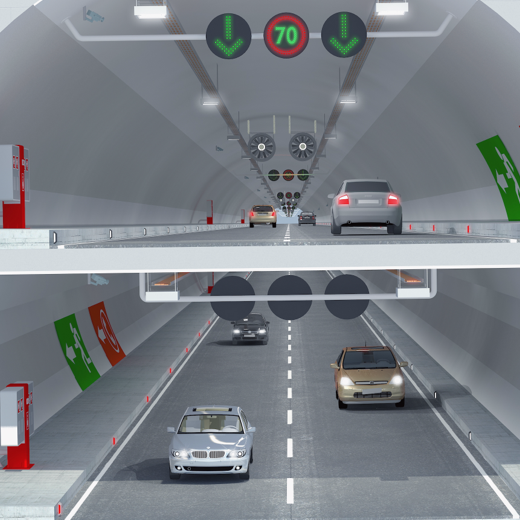The Eurasia Tunnel is the first road tunnel connecting the Asian and European continents underneath the seafloor.

The Eurasia Tunnel is the first two-deck highway tunnel under the seabed in the world.
The Tunnel Boring Machine (TBM), known as 'Yıldırım Bayezid', was used in the tunnel excavation; with a 33.3 kW/m2 cutting head power it ranks 1st in the world, with a 12 bar design pressure it is the 2nd in the world and its 147.3 m2 cutting head area places it at 6th in the world.
The 'North Anatolian Fault', which has high seismic activity, passes 17 km near the Eurasian Tunnel route. The locations of the two seismic rings (seismic joints) designed to reduce stress and displacement from seismic activity to reasonable levels were carefully determined. The seismic rings, with displacement limits that were determined to be ± 50 mm for slip, ± 75 mm for elongation/shortening, were produced in a laboratory after tests to prove their suitability and effectiveness. Determining geometric dimensions and the level of seismic activity to which the rings may be exposed was the 'first' project in the TBM tunneling activity. While the movement magnitude is assumed to be Mw = 7.25 for design in relation to earthquake behavior, the Tunnel has proved to be able to endure ‘service conditions’ against a high magnitude earthquake that is experienced approximately every 500 years and ‘safety conditions’ against a magnitude earthquake that can be seen every 2500 years. The seismic ring locations were successfully verified with 'cutter head torque' values measured continuously during tunnel construction.
During the tunnel excavation process, 440 cutting discs, 85 chisels and 475 brushes were replaced. During the excavation, due to the ever-changing geological conditions, a hyperbaric maintenance-repair operation had to be carried out 4 times by ‘specially trained divers' and all were successfully completed. One of these operations, which caused a total loss of 47 days, had to be run near the deepest point of the tunnel. With the successful completion of this repair and maintenance operation, which had to be carried out under pressure as high as 10.8 bar, which had never been attempted before, another 'first' achieved, and the continuation of the excavation was ensured.